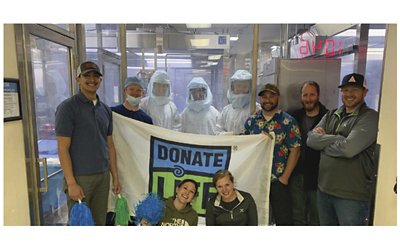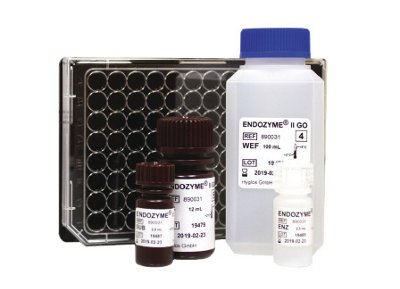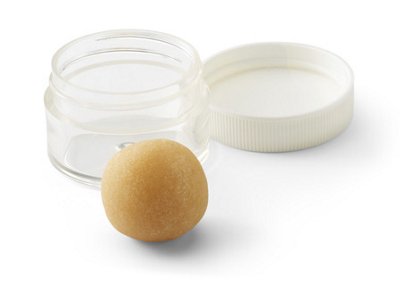Courage to Hope - How Endotoxin Testing Achieved an ROI in Just 11-Months

By bringing endotoxin testing in-house using the GOPLATE™ and the recombinant factor C (rFC) endotoxin detection assay by bioMérieux, a medical-device manufacturer forecasts a return-on-investment (ROI) in just 11 months and expects significant savings over the next 5 years.
Every New Year’s Day, millions of fans watch the iconic Rose Parade, celebrating college football and education’s ability to open doors and change lives. Xtant Medical, a global medical technology company focused on surgical solutions for the treatment of spinal disorders, sponsored the 2022 Donate Life Float, named Courage to Hope. Xtant Medical dedicated a piece of the float to donor Samuel Lee Becker who donated his organs to enable transplant patients to live a fuller life.

Victoria Rensink, MLS(ASCP), CTBS, Clinical Laboratory Manager at Xtant Medical’s Laboratory staff, adopted bioMérieux’s GOPLATE™ because it was the most efficient and cost-effective solution for in-house endotoxin testing.
“We anticipate reaching our breakeven point after approximately 11 months of final product testing — representing approximately $200,000 in savings over the next 5 years.”
As a leading manufacturer of orthobiologics, Xtant Medical commits to improving patients’ lives starting with its commitment to manufacturing excellence. As part of its ongoing effort to continuously improve good manufacturing practices, the company devised a strategy in 2021 to reduce processing interference by bringing endotoxin testing in-house. The goal was to reduce time-to-results and simplify labor while controlling costs. To accomplish this, Xtant Medical’s Laboratory staff and Clinical Laboratory Manager, Victoria Rensink, MLS(ASCP), CTBS, identified bioMérieux’s GOPLATE™, the ENDOZYME® II GO recombinant factor C (rFC) endotoxin detection assay, as the most efficient and cost-effective solution for in-house endotoxin testing. In fact, Xtant Medical achieved its return-on-investment (ROI) benchmark in approximately 11 months, representing significant cost savings over the next 5 years.
bioMérieux sat down with Rensink to discuss how her own “Courage to Hope” inspired her to bring endotoxin testing in-house with the GOPLATE™ recombinant factor C (rFC) endotoxin detection assay.
Historically, how did Xtant perform final product-release endotoxin testing?
Victoria Rensink: Endotoxin testing is performed on all our implantable medical devices, and Xtant used contract laboratories to complete endotoxin testing. The laboratories that Xtant chose used kinetic chromogenic LAL (limulus amebocyte lysate) assays.
What were some of the limitations of that type of chromogenic LAL endotoxin testing?
Answer: For our biologic product, which is comprised of human bone tissue, carboxymethyl cellulose powder and PBS, we ran into test interference with any LAL test.
How did you learn about ENDOZYME® II GO with the GOPLATE™?
Answer: We already had an established relationship with bioMérieux in our microbiology lab, so we visited with our bioMérieux customer representative, and she presented us with bioMérieux’s product ENDOZYME® II GO.
What was your objective or primary drivers for bringing endotoxin testing in house?
Our primary driver was cost savings. We figured if we could somehow overcome the test interference, we would inherently save money. So, our primary driver became finding a test with no interference.
What was the first reagent and technology that you used?
Recombinant factor C (rFC) with a fluorescence reader.
When testing for endotoxin using LAL, you needed to add a beta glucan blocker to avoid interference triggered by the cellulose in the CMC additive. How much of a burden to workflow or expense was that?
The contract laboratory charged us an additional fee per test to add a glucan blocker. This was a needed expense to help with the outcome of the test.

"By using ENDOZYME II GO rFC assays with the pre-coated GOPLATE™, Xtant Medical was able to bring endotoxin testing in-house, reducing turn-around times and saving on testing costs."
“We reduced test expense significantly and eliminated the need for a glucan blocker (β-G-Blocker).”
Were you concerned that rFC would require a new 510k submission?
Answer: We knew that the need to submit a 510k must be evaluated. We approached it by following the FDA’s guidance document entitled, Deciding When to Submit a 510(k) for a Change to an Existing Device, issued by the Office of Device Evaluation on October 25, 2017
How easy or difficult was it to bring endotoxin testing in-house?
Answer: bioMérieux made the process of bringing endotoxin testing in-house simple. We told them what we were hoping to accomplish, and they provided us with everything we needed, outlining the steps it would take to bring it in-house. I think the most challenging part was completing our own in-house documentation for the validation, SOPs, and work instructions.
What were the results after testing the GOPLATE™ and rFC relative to CVs and PPCs? What were the results from the method validation with the GOPLATE™ rFC endotoxin detection assays?
When completing the PQ for the ENDOZYME® II GO rFC method, comparability between the rFC assay and our current LAL test done by the contract laboratory matched up 100%.
Were the samples affected by beta glucan interference?
The samples no longer showed an interference.
What kind of training did the GOPLATE™ require?
There were 3 steps to the training. One, learning how to fill the GOPLATE™ with samples and reagents, which didn’t require multiple dilutions or excessive additional steps. Two, learning how to use the microplate reader. Three, learning how to use the software.
What improvements in turn-around time did you see the ENDOZYME® II GO assays?
Since we were previously shipping samples to a contract lab, we were experiencing anywhere from 3 to 5-day turnaround times. There was also quite a bit of labor required to pack the samples, complete the paperwork, and send them out. Now, we can usually do same-day turnaround time, but never more than 48 hours.
How were you able to reduce costs and simplify the process to reduce labor?
The amount of time it took to ship samples out is the approximate time it takes for us to set up a run, so even though we are doing them in-house, the labor stayed about the same. We were able to reduce most of the expense with the cost-per-test amount and the elimination of needing a glucan blocker.
How long did it take to reach a breakeven point after bringing testing in-house?
We anticipated reaching our break-even point after approximately 11 months of final product testing.
How would you characterize the performance of LAL versus rFC?
The accuracy of the rFC assay is impressive. If we do see any detectable levels of endotoxin, samples within the same batch typically only vary by a few one-thousandths EU/mL. We see many that are below detectable levels.
You had the “Courage to Hope” for a better and less-expensive manufacturing process. What kind of advice would you give to other pharma and medical device manufacturers when it comes to in-house endotoxin testing?
Take a moment to evaluate your endotoxin process. Take note of the amount of pipetting that is needed, how much hands-on time it takes, the steps in the process where errors are most likely to occur, if there is any test interference, and how much waste is produced. Then, research what else is out there.
I guarantee that quite a few steps in your process, if not all, can be improved by switching to an rFC assay. If nothing else, you will help to preserve the population of horseshoe crabs and other biological sources by using rFC.
What do you anticipate the cost savings to be over a 5-year period?
We anticipate a significant savings over the next 5 years.

Xtant Medical’s demineralized bone matrix (DBM) putty is a FDA registered Class II Medical device that is required to undergo endotoxin analysis.
Download - Courage to Hope - How Endotoxin Testing Achieved an ROI in Just 11-Months
- Filename
- A Courage to Hope - How Endotoxin Testing Achieved an ROI in Just 11-Months.pdf
- Size
- 2 MB
- Format
- application/pdf
